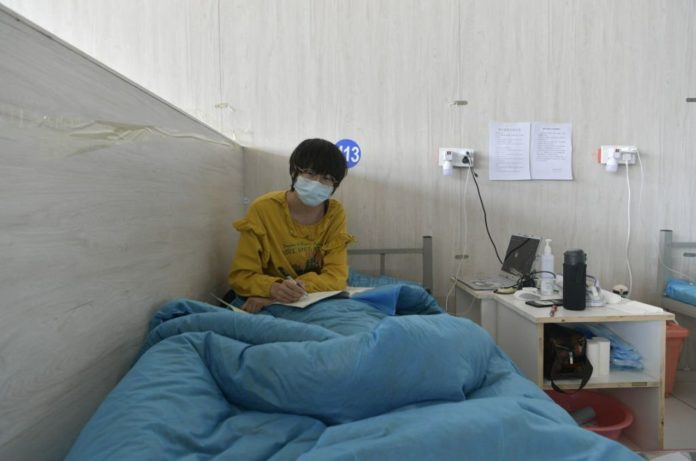COVID-19’s long-term effects on brain physiology and function are yet to be fully understood.
Patients have reported symptoms such as fatigue and brain fog long after they have recovered from a severe COVID infection. However, the long-term effects of SARS-CoV-2 infection on the brain are unknown.
To explore the effect of COVID-19 on cerebral blood flow (CBF) in non-hospitalized COVID-19-recovered adults, the research team used arterial spin labeling (ASL) magnetic resonance imaging (MRI).
As part of the NeuroCOVID-19 protocol, the researchers enrolled volunteers aged 20 to 75 between May 2020 and September 2021. A real-time reverse transcription-polymerase chain reaction (rtRT-PCR) test on an oropharyngeal and/or nasopharyngeal swab revealed that the individuals were positive for SARS-CoV-2.
Following that, the participants were divided into two groups: (1) the COVID-19 group, which included people who had previously self-isolated after receiving a COVID-19 diagnosis, and (2) the control group, which included people who tested negative for COVID-19 but had flu-like symptoms.
The major goal of the study was to measure ASL-derived CBF. The secondary outcomes were calculated using the following methods: (1) a questionnaire on flu-like symptoms completed by patients; (2) the NIH toolbox cognitive and mood batteries; and (3) the University of Pennsylvania smell identification test (UPSIT).
All of the participants were asked to fill out a questionnaire describing the flu-like symptoms they were currently experiencing, had previously experienced, or had never experienced, such as sore throat, cough, fever, fatigue, shortness of breath, smell/taste changes, and/or gastrointestinal symptoms.
Importantly, the NIH toolbox’s cognition battery, a computerized assessment designed to assess the full range of emotional health, produced two age-corrected standard scores of crystallized and fluid cognition, while the emotion battery produced three T-scores representing social satisfaction, negative affect, and well-being. Furthermore, the UPSIT yielded scores that assessed olfactory impairment.
As part of the sensitivity analyses, the researchers compared the COVID-19 to the control group. The exploratory study looked at whether COVID-19 group members who reported fatigue as a present symptom had any differences in CBF compared to COVID-19 group members who had previously experienced fatigue or had no weariness at all.
At the time of enrolment, 50 participants were eligible for the trial, with 39 belonging to the COVID-19 group and 11 belonging to the control cohort. COVID-19 group participants were examined 116.5 ± 62.6 days after testing positive for COVID-19.
According to the data, 28.2 percent and 36.4 percent of COVID-19 participants experienced fatigue, and 20.5 percent and 27.3 percent reported shortness of breath, respectively.
Notably, 92.3 percent of the COVID-19 and 72.7 percent of the controls experienced weariness between the time points of the PCR test and assessment. Furthermore, the COVID-19 group members reported more smell/taste changes than the control group. The cognitive and mood tests, as well as the UPSIT scores, revealed no significant differences between the two groups.
Surprisingly, the COVID-19 group had significantly lower CBF in voxel clusters that included the orbitofrontal cortex, thalamus, and parts of the basal ganglia such as the caudate, nucleus accumbens, pallidum, and putamen. In the COVID-19 group, no voxel clusters with CBF higher than the controls were found.
The sensitivity analysis revealed smaller clusters than the initial analysis after partial volume reduction. In none of the COVID-19 group clusters, CBF levels were higher than those in the control group. The exploratory analyses, on the other hand, revealed CBF differences between COVID-19 participants who reported continuing fatigue and those who did not. Chronic fatigue was characterized by elevated CBF in the superior occipital and parietal areas and decreased CBF in the inferior occipital regions (lingual gyrus, occipital fusiform gyrus, intracalcarine cortex, precuneous cortex).
The study found that people recovering from COVID-19 had lower CBF than controls. CBF differences in persistent fatigue found by the COVID-19 group revealed a role of CBF in a variety of symptoms associated with the post-COVID-19 condition. Overall, the study found that post-COVID-19 symptoms are linked to long-term alterations in brain physiology and function.
Image Credit: Getty
You were reading: Even a mild COVID infection can starve the blood cells – warns study
